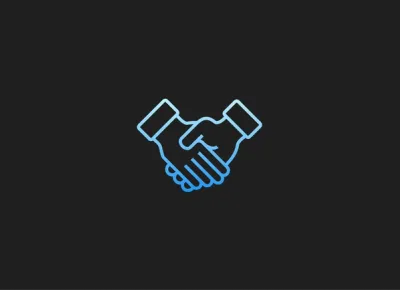Blog
Operations
Resources to improve operations at your startup or VC fund.
All
Fundraising Metrics and data Product Updates Operations Hiring & Talent Reporting Customer Stories

founders
Operations
The Power of Wandering: Lessons from the 2018 Amazon Letter to Shareholders
Lessons From the 2018 Amazon Letter to Shareholders
Since his original 1997 shareholder letter, Jeff Bezos’ shareholder letters have become known as valuable resources that could feel right at home as material for an MBA course. The 2018 letter to shareholders is not different. Jeff drops loads of knowledge on customer obsession, intuition, curiosity, and the power of wandering.
Innovation has always been a core part of Amazon’s rapid growth. It’s almost as if Joseph Schumpeter was writing about Amazon in his economic theory of creative destruction. Schumpeter strongly believed that capitalism was fueled by innovation and the entrepreneurs who are willing to innovate. Creative destruction can be defined as, “a process in which new technologies, new kinds of products, new methods of production and new means of distribution make old ones obsolete, forcing existing companies to quickly adapt to a new environment or fail.”
Going back to Jeff Bezos’ original shareholder letter, he claims it will always be “day 1” at Amazon. The idea of “day 1” is that Amazon will always act as a startup, always be an innovator, and will always avoid creative destruction. Not only is Jeff a perfect example of Schumpeter’s entrepreneur who will innovate, so, it seems, are his employees. As Bezos’ puts it in his 2018 shareholder letter:
“From very early on in Amazon’s life, we knew we wanted to create a culture of builders – people who are curious, explorers. They like to invent. Even when they’re experts, they are “fresh” with a beginner’s mind. They see the way we do things as just the way we do things now. A builder’s mentality helps us approach big, hard-to-solve opportunities with a humble conviction that success can come through iteration: invent, launch, reinvent, relaunch, start over, rinse, repeat, again and again. They know the path to success is anything but straight.”
On their march to a $1T market cap, Amazon has hired talent that matches the description above and put an unbelievable emphasis on their customer base. If Amazon continues to deliver great value to their customers, they will continue to innovate. Intuition, curiosity, and wandering come together to uncover outsized discoveries that can radically change a product or market. Following and executing a plan is the most efficient way to build a business but if you truly want to innovate there has to be a keen desire to wander and test your intuitions.
While listening to customers fuels much of Amazon’s growth curiosity and intuition has been at the center of some of their biggest decisions. The story of AWS is a great example:
“The biggest needle movers will be things that customers don’t know to ask for. We must invent on their behalf. We have to tap into our own inner imagination about what’s possible…No one asked for AWS. No one. Turns out the world was in fact ready and hungry for an offering like AWS but didn’t know it. We had a hunch, followed our curiosity, took the necessary financial risks, and began building – reworking, experimenting, and iterating countless times as we proceeded.”
This simple, yet powerful, idea can be a lesson for all companies. Of course, it is vital to the life of your business to diligently listen to your customer base and deliver what they want, it is also important to listen to the market as a whole and your internal talent. By trusting your intuition and the talent around you, you can take a chance to “invent on their behalf.”
While not every company has $40B cash to lean on, implementing a culture of builders and wanderers can help your company innovate and continue to spur rapid growth.

founders
Hiring & Talent
Operations
In Do Better Work, Clarity and Empathy are the Keys to Results
Our Thoughts on Do Better Work
There are two basic types of leadership book.
The first is the philosophical book. Books in this category are full of fresh ideas and illustrative stories that are meant to inspire. Reading them feels good, and finishing them feels even better. They’re empowering. The best books of this type include one or two key concepts that stick with us long after we’ve turned the last page, influencing our future behavior; the others give us a temporary boost of energy and enthusiasm before they’re forgotten.
The second type of leadership book is the practical book. These books forego inspiration and ideology for marching orders. Full of specific guidelines and tactics, the most effective practical books become trusted manuals for doing business well. The majority get bookmarked and put down about a third of the way through, never to be picked up again.
Do Better Work is a rare book that falls in both categories. In it, author Max Yoder weaves the philosophical and the practical together, seamlessly and to great effect. The result is a leadership book that is not only helpful, but delightful and surprising to read—one where step-by-step instructions for, say, sharing work before you’re ready or achieving clarity, fit neatly alongside the lessons we can learn from philosopher J. Krishnamurti or the vulnerability of superheroes.
I’m acquainted with Max—Visible and his company, Lessonly, share common investors—and his warmth and optimism, both immediately obvious when you meet him, make up the DNA of Do Better Work. Other touches, like the Vonnegut-esque sketches scattered throughout, make the book feel less like a typical leadership volume and more like a diary. Although Yoder writes about himself very little in Do Better Work, it still feels like a deeply personal read.
Each of the book’s chapters is a vignette, with a simple title printed to look like handwriting. Fittingly, each of the chapter titles reads like it’s taken from a to-do list: Look For Opportunity, Ask Clarifying Questions, Get More Agreements. If there’s a central theme, it’s one of empathy and vulnerability, presenting interpersonal risk-taking and openness as the true path to better business outcomes.
If there’s a flaw here, it stems from the author’s apparent reticence to insert himself into the work. It’s telling that Yoder gives a paragraph each to three of the major turning points in his life, but spends almost four pages on the lessons we can learn from production issues on the set of Jaws. It’s unclear whether more details about, say, Yoder’s failed first startup, Quipol, would’ve made the book better, but it is apparent that he’s more comfortable sharing others’ stories than his own.
Do Better Work was self-published, largely because Yoder was resistant to publishers’ requests to inflate the word count. The final product is refreshingly free of fluff, but the book’s independent status may keep it from getting the full recognition it deserves.
In the spirit of optimism, I have to hope that does not end up being the case. Do Better Work is a singular, winsome and challenging book for leaders and their teams alike.

founders
Operations
Startup Leaders Should Have Mentors. Here’s How to Find One.
The idea that startup leaders should have mentors isn’t new, nor is it especially controversial. At this point, it’s generally accepted that having a mentor is a good idea. Despite this, I still think mentors are underrated.
A great mentor can have an exponential impact on both your personal development and the growth of your business. They can serve as a guide through tough times, a voice of warning about potential pitfalls, or a source of challenging feedback and honesty. The best mentors are a combination of collaborator, coach and friend.
Finding a mentor like that isn’t always easy, though. Below, we’ll lay out how a mentor can help you succeed, and provide some suggestions on how to find one who is a good fit for you.
Related Resource: Startup Mentoring: The Benefits of a Mentor and How to Find One
What makes a good mentor?
There is no universal template for what makes a good mentor. The traits that make a mentor ideal for one person might not work at all for someone else. Other factors, like where you are in your professional journey and what your natural strengths and weaknesses are can also inform the kind of mentor you need.
While the attributes of a great mentor will vary, there are a few qualities that are important to look for regardless of who you are and what you need. If you start by looking for someone with these qualities, you’ll be well on your way to finding a good fit.
They listen more than they talk. If you’re actively looking for a mentor, you probably want someone who can give you guidance and advice. That’s certainly something a mentor is meant to do, but if that’s all they do—pontificate and lecture in lieu of learning more about you and your business—they aren’t going to be very effective. A good mentor will always seek to learn more about your situation so that they can give advice that is appropriate and relevant.
They offer a different perspective. We’re often drawn to people who are similar to us. While similar backgrounds and personalities might make initial conversations a little smoother, they will limit how useful the relationship can be in the long run. Go against your instincts and seek out someone who isn’t too similar to you, someone who can offer a fresh, unique perspective.
They aren’t too far ahead. This is another quality that can seem counterintuitive at first. Often when we think of mentors, we think of people with a great deal of experience and success. I recently heard some advice that made me think twice of that approach. Instead of seeking a mentor who is where you want to be in 10 years, seek one who has gotten to where you want to be in one or two years instead. The mentor who is too many steps ahead of you professionally may have plenty of insight, but they likely won’t remember the details of where they were and what they were dealing with when they were in your shoes. Someone who has just recently overcome the challenges you’re facing has everything fresh in their mind, and their advice will be more relevant and practical.
They’re committed. A strong mentor/mentee relationship requires commitment from both parties. It’s an involved relationship, and while it’s not necessarily a major time commitment, it does require both parties to devote time and bandwidth. When choosing a mentor, make sure they’re committed.
Related resource: Should Your Startup Have Mentors? Key Benefits and Considerati
How do I find a mentor?
Once you know what you’re looking for in a mentor, the next step is finding one. This doesn’t need to be complicated. I’d suggest browsing your LinkedIn and Twitter connections for people you respect or admire. Using the criteria above, decide which of these people might be a good candidate for mentorship.
From there, make a short list of 3-5 possible mentors. Write down why you admire them and why you think their perspective would be helpful in your professional development. Then, prioritize the list so that your #1 choice is at the top.
Now it’s time to do a little research. Depending on how close you are with this person already, the research will vary. Ideally, you want to answer the following questions:
What is their attitude toward mentorship?
What are they currently working on?
What makes you think they’ll be a good fit?
If you can answer all three of those questions, you’re ready to reach out. Do this one at a time, starting with your #1 choice. Your best bet is going to be a short, straightforward email. Here’s a short template you can base your email:
Hello Tom—
I hope you’re having a great day! It was great running into you at the conference last week.
I’m writing because I am currently looking for a mentor who might help me develop into a better leader as I work on scaling Kloud Co. I really admire what you were able to do with BiggerKloud Co, and I’d love to learn some lessons from you if you’re willing.
I know mentorship can seem like a big commitment, so maybe we could start by having lunch later this month to see if there might be a good fit? My treat!
If you don’t have the time or bandwidth right now, please don’t feel obligated. And if there’s someone else you think I should be speaking with, please let me know that, as well.
Thanks Tom! Let me know what you think.
Andrew
There’s nothing too fancy here, as the key is being straightforward and respectful of the other’s time. You don’t have to use this template verbatim, but you should make sure to 1) explain why you’re reaching out to them specifically and 2) ask to meet with them once instead of asking them to commit right away. Those two things will make them much more likely to say yes.
If you get a no, or don’t get a response at all, you can repeat the process with the next person on your list. Eventually, you’ll find someone who is willing to help.
Assuming the first lunch goes well, it’s up to you to make the most out of the relationship. This article from the Harvard Business Review offers some great, universal insights on how to make the mentor/mentee relationship as productive as possible. If you’ve identified the right person and put effort into the relationship, a mentor will have a major impact on your development and success.

founders
Operations
11 VC Thought Leaders We Keep Coming Back To
For the past 3 years, we’ve been hard at work scouring the internet for content for our weekly newsletter: The Founders Forward. Over the course of building the Founders Forward, we’ve shared 1000s of articles and have gotten to know different VC thought leaders and influencers.
Below, we’ve shared 11 of the VC thought leaders we learn from again and again. Do you follow anyone that we don’t have on our list? Shoot us an email to marketing@visible.vc or send us a tweet. We’d love to build out the list even more!
Jason Lemkin
Twitter Handle: @jasonlk
Tweets About: All things SaaS with a focus on sales, investor relations, and scaling your business to $100M in Revenue.
Follow if: You are a SaaS founder or operator with an interest in learning from someone who has scaled a business to $100M in revenue.
Where to Start: 10 Great Questions to Ask a VP of Sales During an Interview, You Need to Fundraise 52 Weeks a Year. The 1-and-30 Rule.
Brad Feld
Twitter Handle: @bfeld
Tweets About: The latest tech news for founders, venture capital, and his favorite resources/books for startup leaders and operators
Follow if: If you’re interested in learning more about venture capital, learning from Brad’s portfolio companies, and lessons from his experience as the founder of Techstars and Foundry Group.
Where to Start: Capital Should Follow Talent, Disagree and Commit
Fred Wilson
Twitter Handle: @fredwilson
Tweets About: A stream of his thoughts and blog posts as the founder of Union Square Ventures with a recent focus on blockchain and crypto.
Follow if: You’re interested in learning best practices for founders from one of the most successful VCs, or want to learn more about blockchain technology.
Where to Start: The Valuation Obsession, Should Your Company be Profitable
Semil Shah
Twitter Handle: @semil
Tweets About: A stream of his thoughts on individual startups, tips and advice for founders, and what he personally looks for in an investment.
Follow if: You’re an early stage founder that has taken capital, or are getting ready to raise, and want to leverage the perspective of an early stage investor.
Where to Start: A New VC Crop of Series A Firms, Paying Attention to Inbound Deal Flow
Hunter Walk
Twitter Handle: @hunterwalk
Tweets About: Current events, his daily experiences as an investor, musings from his fund, and advice for founders.
Follow if: You have an interest in the overall venture capital market and are curious about the day-to-day decisions a VC makes.
Where to Start: What Do You Want From Me Besides Capital?, A Strong Cold Email Always Beats a Weak Warm One
Liz Cain
Twitter Handle: @elizabethjcain
Tweets About: All things hiring and developing a proficient sales team drawing on her experience launching the BDR team while at NetSuite.
Follow if: You are a startup founder or operator getting ready to build out a sales process, team, and hiring plan.
Where to Start: How to Give Effective Performance Feedback: Frameworks and Best Practices, A Product-led Approach to Sales
Christoph Janz
Twitter Handle: @chrija
Tweets About: A data-driven approach to SaaS investing across the industry, with a focus on European venture.
Follow if: You are interested in learning more about the SaaS landscape from a macro perspective, or want to know what Europe’s top firm looks for in their investments.
Where to Start: Five Ways to Build a $100M Business, Unsure How Much You Should Pay Yourself? Check out this Founder Salary Calculator
Josh Elman
Twitter Handle: @joshelman
Tweets About: Product-focused tweets focused in the consumer space.
Follow if: You are building a consumer-facing product and have questions for one of the leaders in the space—Josh is quick to respond to tweets.
Where to Start: The Only Metric that Matters, Web Scraping vs. Doing the Work
Ben Horowitz
Twitter Handle: @bhorowitz
Tweets About: His musings from being the name behind of the most successful VC funds in the world: Andressen Horowitz.
Follow if: You want to learn startup and leadership advice from the author behind The Hard Things About Hard Things. Also doesn’t hurt if you’re a fan of rap.
Where to Start: The Hard Thing About Hard Things, How to Tell the Truth
Naval Ravikant
Twitter Handle: @naval
Tweets About: Thought-provoking ideas that not only challenge you as a founder, but as an individual.
Follow if: You want to challenge your thought process, covering everything from venture capital and building a company to meditation and psychology.
Where to Start: Build a Team that Ships, Bitcoin – The Internet of Money

founders
Operations
Themes, Not Goals – What Most Startup Leaders Get Wrong About Annual Planning
Business Planning for the New Year
It’s resolution season, which means many of us are making declarations about how many books we’ll read or how many pounds we’ll lose this year. The ball descends on December 31, and on January 1st—or maybe January 2nd, depending on our hangover level—we set out to make our resolutions a reality.
Here’s a stat that isn’t too encouraging: 80% of those resolutions will fail by February. It’s so bad that some psychologists actually suggest starting your resolutions on February 1. A major contributor to that failure rate is the lofty nature of most resolution goals. Goals are best when they’re broken down into smaller steps that are more attainable and achievable.
Instead of setting out to read 25 books this year, for instance, it’s better to aim at reading 2 books a month. Or—even better—read for 20 minutes every weekday. The end result is about the same, but the path you take to get there has incremental steps that make the goal easier to accomplish.
So what does this have to do with annual planning? Well, if you’re doing it right, you’ve already set your business goals for 2019. But, if closing out Q4 and the blur of holidays got in the way, you may be sitting down this week or next to write out your 2019 goals. And my advice is: don’t.
What I mean is, don’t try to write lofty, year-long goals. For many of the same reasons that most resolutions fail, most businesses miss the mark on their annual goals by year’s end. In fact, businesses fare even worse than resolution-writers: 90% of senior executives told The Economist they fall short of annual goals.
This is especially true in the startup world, where the rapid pace of change means the goals you have today may not even be relevant six months from now.
So instead of focusing on big annual goals, focus on themes. What themes will drive the focus of your business this year? Themes should align with your overall vision, and can be anything that is important to where you want to go. You want something that isn’t so vague that it’s meaningless, but also isn’t so specific that it’s essentially a goal with a different name.
One of the current themes here at Visible is “Time to Value.” We’re asking ourselves how we can ensure that we are having a positive impact on our customers’ businesses as soon as they start using the product.
Once you have your themes, then you can start creating monthly and quarterly goals that line up with them. Themes, then, become the lenses through which you can prioritize your efforts. If an initiative doesn’t line up with one of your themes for the year, you’ll reevaluate whether it’s really worth doing. Our “Time to Value” theme is informing everything from our product roadmap to our marketing efforts.
So, instead of setting big annual goals that you aren’t likely to reach anyway, consider choosing themes instead. If you choose them well, they’ll last a whole lot longer than your New Year’s resolutions do.
Related Resources: How to Write a Business Plan For Your Startup

founders
Hiring & Talent
Operations
Operations
The Friday Note Challenge
If you are a CEO or other company leader, I have a challenge for you: spend the next 8 weeks writing Friday notes to your team.
You don’t have to send them on Fridays, and they don’t actually have to be written—I’ve seen video updates work very well, too—but you do have to send one to all of your employees, every week, for the next 8 weeks.
If you haven’t done this kind of thing before, I guarantee you’ll be pleased with the results. Ben Horowitz wrote that “perhaps the CEO’s most important operational responsibility is designing and implementing the communication architecture for her company.”
Put another way, the CEO sets the tone for company communication. If you communicate intentionally, openly, and predictably, odds are the rest of your team will, too.
What’s in a note?
A Friday Note can be just that: a note. It doesn’t need to include a in-depth report on company progress or deep philosophical insight. In fact, I’d argue an approach like that could be counter-productive. Instead, share what’s at the top of your mind for the week and why, plus some words of encouragement or additional thoughts. What are you excited about? Where would you like to see improvement? What have you been reading lately?
If you’re sending the note via email, keep it under a page. If it’s a video, two minutes or less. Your note should be easy to digest. If you have additional thoughts, save them for the following week.
Most importantly, take a tone that is as personal as you’re comfortable with. Your team likely gets enough official communication from you and other org leaders, so something more conversational will be refreshing.
What you’ll get in return
It’s easy to forget that with the title of CEO comes a degree of unapproachability. The larger and older your company, the more this is true. A weekly note to the entire team, presented without much varnish, helps you connect with your employees on a more human level than they may be used to.
In a previous role, I worked with the CEO to compose Friday notes for the team’s ~120 employees. He got responses every week. Some were straightforward, to the tune of “thanks for writing this!” but others offered more, like an employee’s thoughts on the subject at hand, or even questions or comments about unrelated matters. Either way, the note started a dialogue that wouldn’t have happened otherwise.
Finally, a weekly note gives you a chance to evangelize your vision. Your team may have heard it at an annual All-Hands or in a quarterly call, but supporting that vision with regular reminders is a great way to ensure that everyone keeps working toward it.
If you need help getting started, we have a great weekly note template in our resources section. Otherwise, just give it a shot this week and see what happens. I promise it’ll be worth your time.

founders
Operations
Ready to Embrace Transparency? Keep These 3 Things in Mind
Much has been written about the benefits of organizational transparency, but some startup founders are still slow to adopt it in their businesses. It is awfully hard for an employee, investor, or advisor to add value to a business when they’re left in the dark. At the same time, however, it is vital to be thoughtful when deciding which information to share. Transparency can be a double-edged sword. Too much transparency can lead to confusion, whereas too little can lead to distrust and a failure to align your team and stakeholders.
Outside of the value-add from your current stakeholders transparency can be a catalyst for building trust and attracting top capital, talent, and customers. Here are 3 things to keep in mind when embracing transparency at your company.
Sharing without context is dangerous
Data without context is dangerous. While it may be easy to say, “I shared a dashboard with every in the company, I’m being transparent!”, that can lead to confusion, questions, and more answers. Sharing a revenue dashboard without including your monthly burn or spending does not provide much context for anyone consuming the data.
Des Traynor, the CEO and founder of Intercom, claims that mastering transparency has been one of the toughest lessons he has had to learn as a CEO. As Des puts it, “Transparency is some sort of spectrum. I think one thing that people over-engineer for is ‘let’s let everyone have access to absolutely everything and somehow magically assume that you’re going to understand it all on how we think about everything all the time.’ That’s just not how it works, unfortunately.”
Keep it consistent
One of the key benefits of being transparent is building trust. One of the easiest ways to destroy this benefit is by constantly changing up or hiding information. If you’ve been sharing certain financial metrics, then unexpectedly stop sharing the same data or change the context it is in, it will create questions and can sow distrust in your stakeholders.
Joel Gascoigne, the CEO of Buffer, has had to deal with the burdens of sharing the negatives throughout the process. Often regarded as one of the most transparent companies, Buffer went through a round of layoffs that were a surprise to most of the organization. As Joel puts it, “I don’t feel that we fully lived up to our value of transparency, specifically to share early in order to avoid a big revelation later.”
The Range of Transparency
Transparency is not a “one size fits all” approach. In the workplace, people will tell you transparency means different things to different companies. At the end of the day, transparency is about arming your stakeholders with the information they need to add the most value to your business.
On one end of the spectrum, you have companies like Buffer who is often considered one of the first to embrace radical transparency. Joel Gascoigne, CEO of Buffer, shares everything from a live feed of new MRR to salaries for their employees.
Other companies, like Structural, share a weekly note from the CEO. The “Friday Note” is a quick way to keep everyone in the loop and rallied behind the same vision. It is a simple way to engage employees but avoid any of the confusion that may come with sharing granular financials and strategic decisions.
No matter how transparency takes shape at your company, it is vital to arm your stakeholders with the information they need to add value to your business. Create a plan, stick to it, and give everyone the context they need to succeed. Interested in learning more? Check out our other resources for embracing a transparent culture at the Founders Forward Blog.

founders
Hiring & Talent
Operations
CEO Weekly Note Update Template
CEO Friday Note
Successful companies come in different shapes and sizes yet they often share a few key traits. One of which being regular and open communication. Dig into any great leaders, past and present, and you’ll notice most (if not all) have created some type of management system that allows for open and regular communication. Whether it be Marc Benioff’s V2MOM, Scott Dorsey’s “Friday Note”, or Kyle Porter’s Weekend Update communication can also come in different shapes and sizes.
As ExactTarget scaled from a small startup to hundreds and thousands of employees it was no longer feasible for Scott Dorsey to stay in touch with everyone. His answer? The Friday Note. In an interview with Chip House of Structural, Scott Dorsey had this to say: “I started officially sending out my ‘Friday Note’ in 2009 and never missed a weekly email for over five and a half years. It was a simple and very impactful way to highlight accomplishments for the week and keep the lines of communication open with our 2,000+ employees. It showcased the transparency in the company and helped us keep our unique ‘Orange’ culture as we scaled the company — one of the defining factors to our overall success at ExactTarget.”
Weekly team Updates are a quick way to share your company vision, rally around goals, and stay aligned as the team continues to grow. On the flip side, weekly Updates tend to help CEOs and leaders stay on top of the business. As Kyle Porter puts it, “Personally, writing this email helps me better understand the state of the business. It also helps everyone else stay in the loop so they can help out where needed and not lose track of our direction.”
We’ve pieced together an Update Template from different methods and styles used by leaders like Marc Benioff, Scott Dorsey, and Kyle Porter. Once you’ve dialed in your style and format you should be able to crank out a weekly Update to your team in 30 minutes or less!

founders
Hiring & Talent
Operations
Metrics and data
Operations
Startups: Why Send Management Reports?
Successful companies share a few key traits… so do unsuccessful ones. Investors, executives, team members, potential hires, etc. understand this. Regular management reports show the CEO/CFO/etc. are key in keeping business decisions agile while showing you value what your management team brings to the table.
How Can You Get Started with Successful Management Reports?
It’s a lot easier than you might think. Good management reports don’t have to be long and they don’t have to be time consuming. If you’ve already got metrics, KPIs, etc. in place with your teams it is a matter of extracting the key data and turning it into something easily replicable, actionable, and digestible. Sharing financials, metrics, and dashboards can certainly be useful to managers but suffocating at the same time.
Bringing clarity and simplicity to management reporting is a strong start to avoid “the activity trap” and keep managers, teams, and individuals focused on their original purpose. It is easy for team members to get lost in their day to day and ultimately forget why they joined your company to grow the company and themselves. In working with countless CEOs, CFOs, and managers, we have a few things to keep in mind while building your management reporting and data distribution system:
Replicable – Keep metrics and objectives comparable from report to report. Chances are you’ve got an objective in place so be sure to highlight that in every report to keep focus where it matters most.
Actionable – Be sure that the report leaves room for questions, discussions, and a game plan until your next meeting, report, etc.
Digestible – Make the report light and to the point. Be sure to include only the 2-6 most vital metrics as full dashboards and spreadsheets can become suffocating and distract from your manager’s main objectives.
An Example Management Report
You can check out an example of a Visible Management Report Here.
As always, feel free to sign-up for a free trial here and email support@visible.vc if you’d like the template dropped into your account.

founders
Operations
Our 6 Favorite Blogs for Growing Your Startup
In the “world of startups” there is endless amounts of content being published every day. It can be a daunting task determining what sources can be trusted. While curating a list of of our favorite content on a weekly basis for our newsletter, we have come across tons of content and wanted to share 6 blogs we have found to be incredibly valuable and reliable. We hope our list can help cancel out the noise and surface resources to help you fundraise, scale, and hire for your startup.
Related resource: 12 Online Startup Communities for Founders
Point Nine Land
Point Nine Capital is an early stage venture capital firm focused on SaaS and online marketplaces based in Berlin. Point Nine writers offer a unique perspective from the “VC” side of things and share many of their thought processes and benchmarks for evaluating investments.
Our favorite posts from Point Nine Land:
Deconstructing VC’s Decision Making Frameworks
The Top 3 Things Investors are Looking for in SaaS Startups
An Early Stage Founders Guide to Working with VCs — 5 Part Series
SaaStr
Led by Jason Lemkin, Co-founder & CEO of EchoSign, SaaStr features daily blog posts from Jason’s (and other SaaStr writers) journey scaling and selling EchoSign. Posts cover everything from leadership lessons to breaking down Customer Lifetime Value.
Our favorite posts from SaaStr:
How to Gracefully Miss a Quarter. And Take the Right Steps Afterwards.
You Need to Know Where You Stand with Your Investors. Your Investor NPS.
Why Lead Velocity Rate (LVR) is the Most Important Metric in SaaS
High Alpha
High Alpha is a Venture Studio based in Indianapolis. The team (and writers) at High Alpha is made up of experienced entrepreneurs, operators, and investors. The High Alpha blog is a great tool box for finding resources to scaling your enterprise software business from $10M to $100M and beyond.
Our favorite posts from High Alpha:
The Art of Storytelling
What Every Startup Employee Should Know About Finance
The (Second) Greatest Sales Deck and Pitch I’ve Ever Seen
Tomasz Tunguz
Tomasz Tunguz is a Partner at Redpoint Ventures. On his personal blog, Tomasz publishes a daily blog post. Often data-driven and more technical the posts are a great way to get the bottom of key questions most startups face on a daily basis.
Our favorite posts from Tomasz Tunguz:
Clarity of Purpose – The Competitive Advantage of Focus
The 10 Most Important Metrics in a Startup’s Financial Statements
Premoney vs. Postmoney – Which is a Better Technique for Negotiating?
Feld Thoughts
Brad Feld, Co-founder of Foundry Group, has been in entrepreneurship and venture capital for 30+ years. In his personal blog, Feld Thoughts, Brad writes a daily post with current happenings in venture capital and shares experiences from his time in the industry.
Our favorite posts from Feld Thoughts:
Hotshot Advice on Raising Venture Capital
The Ideal Financial Reporting Tempo for a VC-Backed Company
Founders – Use Your Down Round to Clean Up Your Cap Table
Both Sides of the Table
Both Sides of the Table is the personal blog of Upfront Venture’s, Mark Suster. The blog focuses on “both sides of the table” as Mark is a 2x founder and investor himself.
Our favorite posts from Both Sides of the Table:
11 Quick Tips to Get More Value Out of Your Board
Getting Your Head in the Game for Fundraising
Why Raising Too Much Money Can Harm Your Startup

founders
Operations
Storytelling Lessons from Warren Buffett and Jeff Bezos
A psychology professor and director of Resilience Research at the Appalachian Center, Dr. Sherry Hamby says that sharing stories of personal struggles can make you more resilient and other people more empathetic. Business leaders have also learned that sharing company growth stories can build an emotional connection that helps attract and retain customers, talent, and investors.
There is endless content for telling a compelling story to your customers and team. However, we’ve found investors are often left out of the storytelling framework. We set our sites on two business greats that have become synonymous with using investor letters as a powerful storytelling platform; Warren Buffett and Jeff Bezos.
Stay Focused on Your North Star
Apart from the desks made of doors, trendy sunglasses, and HQ2, Jeff Bezos has become identified with his original 1997 shareholder letter. To this day, Amazon still includes a copy of the 1997 shareholder letter with each annual letter. So what sets it apart and makes it arguably the most famous shareholder letter to date?
According to Tomasz Tunguz, Amazon’s competitive advantage started the day their first shareholder letter was published. Jeff has since remained focused on their “North Star”; customer obsession. Bezos has been able to center every annual letter around their “customer obsession” and simply changes the narrative and storyline. In 1997, it started with e-commerce and saving customers time & money,
“Today, online commerce saves customers money and precious time. Tomorrow, through personalization, online commerce will accelerate the very process of discovery. Amazon.com uses the Internet to create real value for its customers and, by doing so, hopes to create an enduring franchise, even in established and large markets.”
Almost 20 years later, when announcing Amazon Web Services had reached $10B in Revenue. Bezos found a way to align the differing brands and bring back to focus their customer obsession:
“They (Amazon.com and AWS) share a distinctive organizational culture that cares deeply about and acts with conviction on a small number of principles. I’m talking about customer obsession rather than competitor obsession, eagerness to invent and pioneer, willingness to fail, the patience to think long-term, and the taking of professional pride in operational excellence. Through that lens, AWS and Amazon retail are very similar indeed.”
As Bezos has said himself, “You can have the best technology, you can have the best business model, but if the storytelling isn’t amazing, it won’t matter. Nobody will watch”. Whether sending investor Updates on a monthly, quarterly, or annual basis find your “clarity of purpose” and use that to build a theme to your company’s story.
Bring Out Humanity and Trust
Not only is he one of the greatest business minds, the Oracle of Omaha is often regarded as one of the greatest storytellers in business. Just like Bezos, Warren Buffett has turned his annual shareholder letters into a platform for fueling investment and interest in their business.
While Buffett most certainly covers all financial housekeeping he has turned Berkshire’s letters into a platform that builds trust and lets investors (and potential investors) into Berkshire’s decision making and culture. Often filled with everyday language, unique stories, and a sense of humor, Buffett has been able to humanize Berkshire and create a sense of trust with investors. The $87B man has even gone as far to call himself “dumb” in his letters, just as one of your friends or co-workers might. Sure, it might be easier to step outside the norm when your company is valued near $500B but it is never too early to start bringing out the “human side” and building a relationship of trust with potential investors.
What’s Your Story?
Engage prospects, customers, investors, employees, and other stakeholders with Visible. You just need a business email account to get started.

founders
Operations
Use Storytelling to Increase your Price
This post is Part II or II of our storytelling series. You can find our first post, “Connecting Dots to Tell Your Story” here.
The same principles that Pixar uses to craft their hit movies like Finding Nemo and Ratatouille can be applied to your own investor updates and pitch. Awesome right?
I recently attended SaaStr and had the chance to see Jason Katz the Chief Storyteller at Pixar and Peter Arai the CEO & founder of Prezi talk about the 3 Parts of Visual Storytelling.
Part 1 – Takeaway Message
What is the message you want to leave with your audience? For finding Nemo it is faith vs fear, but the same concept can be applied for business.
At Visible we encourage you to lead with your true north KPI followed by a big ask. Afterall, Investor Updates are most valuable for the company. Leverage your stakeholders to help make introduce to ideal customers, provide guidance on your go-to-market strategy or source new candidates. With each update you have the chance to leave your stakeholders with a takeaway message, don’t squander it!
Part 2 – Structure and Visuals
How do you structure the visual elements to enhance your story? This could be through framing, data visualizations and more.
In addition, your story should follow a structure of beginning, middle and end. Combing structure & visuals can have a profound impact on delivery your key takeaway. Bonus points if you use the same comparable metrics for each update.
One of my favorite posts around data visualization is, “Remove the legend to become one”. This chart:
Is actually the same chart as this one with the same underlying data. (Make sure to check out the post to see how to get here!)
Proper visuals can make all of the difference right?
Part 3 – Delivery
The final part of visual storytelling comes down to delivery. With your stakeholder updates you want to get your message across as efficiently and effectively as possible. You shouldn’t create more work for your stakeholders to get your key takeaway message.
This is why we make it so our customers can control the delivery of their updates through being rendered in email, to PDF, web and Slack.
Great so now we know the 3 parts of visual storytelling but what value can that have on my business? Well it turns out…a pretty big one.
I recently saw Stephen Day from Navidar present at an offsite around M&A, specifically around how to get the best price for you company. He broke it down into this brilliant and simple equation:
Price = Value + (Compelling Story + Competitive Process)^Evoking Emotion
To break this down. Value is the fundamental value of your business. This could be a discounted cash flow analysis to find your valuation.
Related resource: Discounted Cash Flow (DCF) Analysis: The Purpose, Formula, and How it Works
However, you can clearly see how your story and ability to evoke emotion can generate a much higher price than your fundamental one.
This doesn’t just apply to valuation. This can be the pricing of your own product or service as well. The best brands are the best storytellers and they typically elicit the highest price.
Craft your own framework and tell your story. Sign up to Visible today to get started.
Up & to the right,
Mike & The Visible Team

founders
Hiring & Talent
Operations
An Update Template to Ensure You Get the Most of Your All-Hands
Weekly All Hands Team Email Template
There is no doubt that All-Hands Meetings can be a powerful tool to drive culture, share accomplishments, and break down company performance. However, as Ray Gillenwater, CEO of SpeakUp, put it:
“Taking time to get the entire company into a live session is an expensive and risky proposition. It says quite a bit about leadership’s attitude. Namely, we value people in this organization enough to invest in:
Keeping everyone informed of major company updates.
Ensuring everyone is emotionally connected to the company’s goals.
Listening to the team’s (preferably unfiltered) feedback and questions.”
With that being said, it is vital to formalize your All-Hands process and make sure you are doing everything in your power to make sure you are properly utilizing the entire organization’s time.
Below you will find an Update template intended to share before your next All-Hands in preparation for your meeting or share after to summarize the meeting.
The template is largely based off of Square’s Town Hall meetings and is broken into 3 major categories — The Team, Mission & Goals, and Agenda & Questions.

founders
Operations
Build Relationships with Every Customer Using QBR Updates
In an ideal world every company would be able to host a “Quarterly Business Review” for every customer. In reality, QBRs are generally reserved for your “higher touch clients” (read: top tier), as they should be. With that being said, there are easy steps (outside of an in-person meeting) you can take to nurture your lower contract size customers to build a strong relationship and avoid churn. Who knows? They might even blossom into a “top tier” customer.
We suggest checking out the articles below if you’d like to learn more about QBRs:
The Essential Guide to Quarterly Business Reviews from Gainsight
Eight Tips for Nailing Your Next Quarterly Business Review Presentation from Forbes
Scaling QBRs
Traditionally, QBRs are in-person and bring in the executives from both companies. This is great, and ideal, for large enterprise deals. But when you’re a high growth company sending executives across the country is most likely not feasible. With that being said, a quick quarterly Update on the past, present, and future of your business relationships can be a valuable tool.
More than ever, consumers care about quality, transparency, customer support, convenience, cause and usability. The same is starting to become true in the business world. While it is nice to get buy-in from management, employees have more power and discretion when it comes to choosing their tech stack. By sending quick quarterly reports or Updates, Customer Success Managers and end users can build a strong personal relationship and strengthen ties throughout the organization.
Our QBR Update Template
Below you will find our Update Template to send to your clients on a quarterly basis. The template is broken into 5 separate sections; general health, 90 day highlights, benchmarking, usage, and the future. The template is intended to show your company’s value, start a conversation, and get in front of potential issues.
Keep in mind, this template is not intended to be a “one size fits all”. QBRs are a great way to show the value that your product or offering is adding to their business and are a great chance to add “your own spin”.
If you’d like us to drop the template into your Visible account feel free to shoot us a message to support@visible.vc and we would be happy to do so.

founders
Reporting
Operations
Metrics and data
Operations
An Update Template for Marketing Teams
A Weekly Email Template for Marketing Leaders
Marketing is one of the most measurable aspects of a business. With vast data points, it is important to hone in on what truly matters and rally your team behind those key metrics.
This week, we have put together an Update template intended for marketers to “report up”. Whether that be a marketing representative to manager or manager to executive, our Marketing template is intended to be standardized across the team to keep everyone moving in the same direction.
Key Metrics
Keep in mind the metrics in the template are suggestions and can be tailored to your organization’s needs. Some of our favorite marketing metrics include Customer Lifetime Value, Customer Acquisition Cost (check out this video to use formulas to create CAC in Visible), and these 5 metrics for “reporting up”.
TL;DR
A quick recap of any major milestones, concerns, and figures from the last period. Always a good idea to piggyback off of any product updates, metrics, projects, concerns discussed at previous meetings/updates.
Now Content and Campaigns
Include a brief section of any campaigns, content, and emails published from the past week. The goal here is to keep everyone in the loop and ultimately lead to conversations and improvements.
Funnel Review
A funnel is a quick way for all parties to quickly digest your marketing conversions and inbound marketing efforts. The metrics used in a funnel can be customized to any business as well. Make note of any interesting leads or trends that have noticed over the previous period.
Customer Stories
Reflect on the past period and share any relevant quotes from customers; good and bad. What is going well? What is not working? Feedback to certain emails? etc.
Unlock Your Investor Relationships. Try Visible for Free for 14 Days.
Start Your Free Trial